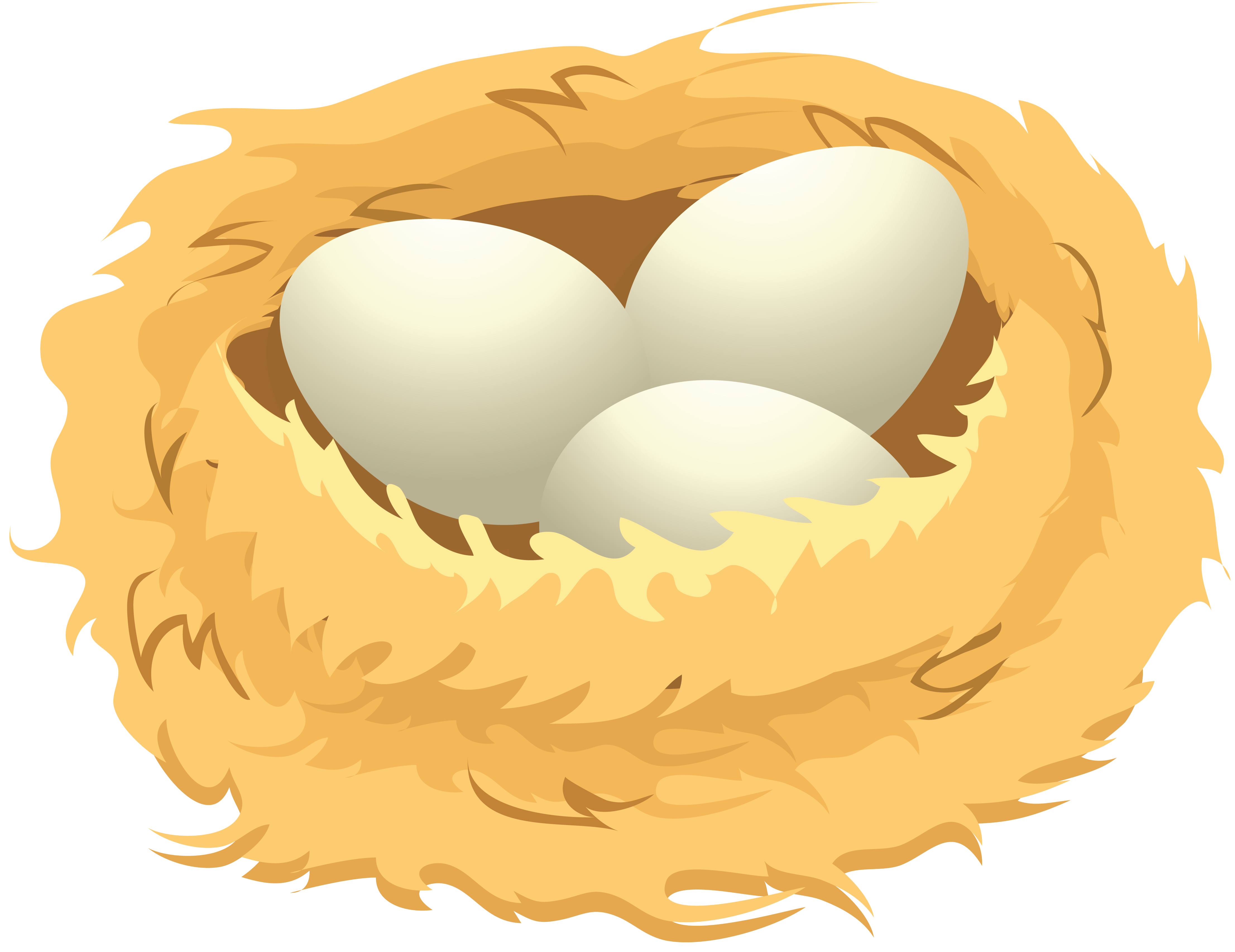
This image has format transparent PNG with resolution 4425x3412.
You can download this image in best resolution from this page and use it for design and web design.
Nest PNG with transparent background you can download for free, just click on download button.
A nest is a structure built by certain animals to hold eggs, offspring, and, occasionally, the animal itself. Although nests are most closely associated with birds, members of all classes of vertebrates and some invertebrates construct nests. They may be composed of organic material such as twigs, grass, and leaves, or may be a simple depression in the ground, or a hole in a rock, tree, or building. Human-made materials, such as string, plastic, cloth, or paper, may also be used. Nests can be found in all types of habitat.
Nest building is driven by a biological urge known as the nesting instinct in birds and mammals. Generally each species has a distinctive style of nest. Nest complexity is roughly correlated with the level of parental care by adults. Nest building is considered a key adaptive advantage among birds, and they exhibit the most variation in their nests ranging from simple holes in the ground to elaborate communal nests hosting hundreds of individuals. Nests of prairie dogs and several social insects can host millions of individuals.
Nest building is often driven by a biological urge in pregnant animals to protect one's offspring known as the nesting instinct. Animals build nests to protect their eggs, their offspring, or themselves from danger. The simplest nest structures are adapted to hide eggs from predators, shield them from the sun or other environmental factors, or simply keep them from being scattered in ocean currents. In some cases, nests also help provide safety in numbers for egg-laying animals.
Many nest builders provide parental care to their young, while others simply lay their eggs and leave. Brooding (incubating eggs by sitting on them) is common among birds. In general, nest complexity increases in relation to the level of parental care provided. Nest building reinforces social behavior, allowing for larger populations in small spaces to the point of increasing the carrying capacity of an environment. Insects that exhibit the most complex nest building also exhibit the greatest social structure. Among mammals, the naked mole-rat displays a caste structure similar to the social insects while building extensive burrows that house hundreds of individuals.
n general, birds are the most skilled nest builders, although not all species of birds build nests, some laying their eggs directly onto rock ledges or bare soil without first modifying the area. Complex nest building is considered to be one of the key adaptive advantages of birds. Nests help regulate temperature and reduce predation risks, thus increasing the chance that offspring live to adulthood.
Bird nests vary from simple depressions in the ground known as scrapes to largely unstructured collections of branches to elaborately woven pendants or spheres. The megapodes, one of the few groups who do not directly brood their young, incubate their young in a mound of decomposing vegetation. One species, Macrocephalon maleo, uses volcanic sand warmed by geothermal heat to keep its eggs warm. Among the simple nest builders are falcons, owls, and many shorebirds. The weavers exhibit perhaps the most elaborate nests, complete with strands of grass tied into knots. Most bird nests lie somewhere in the middle, with the majority building cup-shaped nests using some combination of mud, twigs and leaves, and feathers. Some birds, such flamingos and swifts, use saliva to help hold their nest together. The edible-nest swiftlet uses saliva alone to construct their nests. The rufous hornero nest is composed entirely of mud and feces, which is placed on tree branches to allow the sun to harden it into a usable structure. The tailorbirds stitch together leaves to provide cover for their nest sites.
In this page you can download free PNG images: Nest PNG images free download